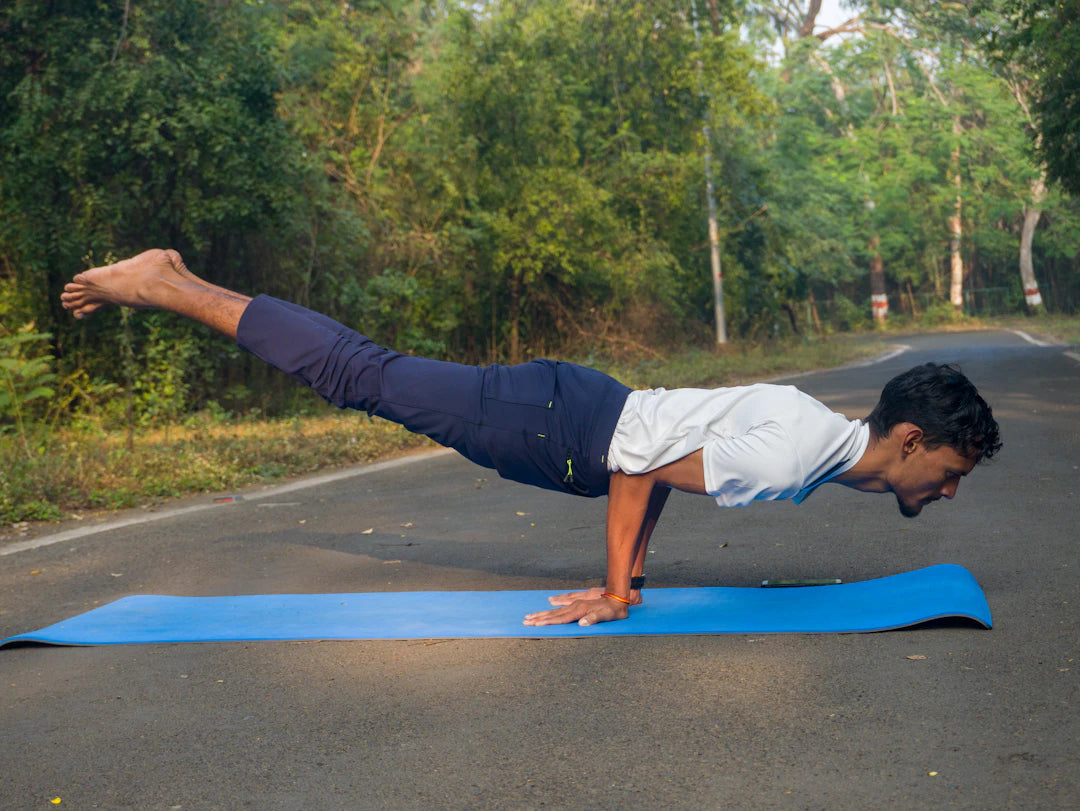
Debunking Myths: Senior Fitness Made Simple
Share
Frequently Asked Questions
1. Why is staying physically active important for seniors?
2. What are some common myths about senior fitness?
3. How can seniors overcome joint pain while exercising?
4. What are some easy mobility routines seniors can adopt?
5. How can nutrition impact fitness for seniors?
As we age, staying physically active becomes increasingly important for maintaining our health and overall well-being. However, several myths surrounding senior fitness can discourage older adults from engaging in these beneficial activities. In this article, we will explore common misconceptions about fitness for seniors and provide actionable advice on how to integrate easy mobility routines into your daily life. Let's demystify senior fitness together!
Understanding the Myths
Myth 1: Seniors Should Avoid Exercise
One of the most pervasive myths is that older adults should avoid exercise altogether due to concerns about injuries or exacerbating health conditions. The truth? Engaging in regular physical activity is essential for enhancing flexibility, strength, and balance. In fact, avoiding physical exercise can lead to increased stiffness and decreased mobility, making daily activities even more challenging.
Myth 2: Strength Training is Dangerous
Another common misconception is that strength training is only for the young and athletic. However, gentle strength training exercises can be incredibly beneficial for seniors. These routines help build and maintain muscle mass, improve bone density, and enhance physical stability. In the context of easy mobility routines, strength training can focus on bodyweight exercises or light resistance bands, making it accessible and safe.
Myth 3: All Exercise is High Intensity
Many individuals assume that exercise needs to be high-intensity to be effective. This notion often leads older adults to believe that they cannot keep up with fitness trends. In reality, engaging in moderate or low-intensity activities is not only suitable for seniors but is often recommended. Walking, yoga, and stretching can be excellent options for maintaining fitness without the strain of more vigorous workouts.
Common Challenges Older Adults Face
Joint Pain
Joint pain is a significant concern for many seniors, which can lead to fear of movement. However, it’s essential to understand that gentle exercise can actually alleviate stiffness and reduce pain. Incorporating easy mobility routines that focus on low-impact activities—such as swimming or tai chi—can help mitigate joint discomfort and promote a more active lifestyle.
Balance Issues
As we age, our balance can deteriorate, making everyday tasks seem daunting. This is where easy mobility routines play a critical role. Activities that emphasize balance, such as gentle yoga or simple standing leg lifts, can significantly improve one’s stability. Start off by doing these exercises at home with a sturdy chair nearby for support.
Motivation Struggles
Finding the motivation to get moving can sometimes be harder than the exercises themselves. Many older adults may feel disheartened by their fitness journey or unsure where to start. It’s essential to set realistic and attainable goals. Begin with short, manageable routines and gradually increase as confidence and stamina improve. Remember, every small step counts toward better health!
Tips for Easy Mobility Routines
Create a Routine
Establishing a consistent schedule can be immensely helpful. Choose a time each day that works best for you—whether it’s morning, afternoon, or evening—and stick to it. This consistency will help build a habit. For instance, you might decide to begin each morning with a 10-minute stretching routine to ease into your day.
Stay Hydrated
Hydration is critical, especially when exercising. Make sure to drink plenty of water before, during, and after your workout. This is particularly important for seniors, as dehydration can lead to fatigue and confusion.
Listen to Your Body
Every individual’s body is different, and it’s essential to listen to what yours is telling you. If you experience pain or discomfort while doing an exercise, stop and evaluate. Gentle modifications can often make a world of difference in how you feel. Don’t hesitate to consult a healthcare professional if you’re unsure about any routines.
Safe and Gentle Fitness Routines
Walking
Walking is a fantastic and simple form of exercise that offers numerous benefits. It can improve cardiovascular health, strengthen muscles, and enhance your mood. Start with short distances and gradually increase as you feel more comfortable. Consider inviting a friend or family member to join you; companionship can make walking even more enjoyable!
Seated Exercises
If standing or traditional exercises are a challenge, seated exercises are a great alternative. Try seated leg lifts, arm raises, or gentle twists while sitting in a sturdy chair. These allow you to engage in movement without putting unnecessary strain on your body.
Stretching
Incorporating stretching into your daily routine can help maintain and improve flexibility. Basic stretches can be performed while sitting or standing, focusing on areas that are commonly stiff, such as the back, legs, and arms. Regularly practicing stretching aids in easing joint pain and enhances mobility.
Adopting Healthy Lifestyle Habits
Nutrition Matters
Healthy eating is just as important as physical activity. Ensure that your diet is rich in fruits, vegetables, whole grains, and lean proteins. Nutritional choices can significantly impact energy levels, mood, and physical performance. Consider discussing dietary changes with a registered dietitian who specializes in senior nutrition for personalized advice.
Finding a Community
Engaging with others can significantly enhance your fitness routine. Look for local groups focused on senior fitness or online communities where you can share experiences, tips, and encouragement. Connecting with like-minded individuals can not only increase your motivation but also foster lasting friendships.
Empower Yourself with Easy Mobility Routines
Embracing fitness as a senior is both possible and beneficial. By debunking these common myths, understanding the challenges you might face, and taking actionable steps to create easy mobility routines, you can enhance your overall well-being. Remember: starting small is perfectly okay. Celebrate each progress, stay patient with yourself, and embrace this journey toward a healthier, more active you! The key is to keep moving, stay engaged, and enjoy the benefits that come with fitness at any age.
